What is the benchmark?
- alynpeden
- Sep 21, 2025
- 3 min read

Having worked in EUC for many years, the physical device has always been the benchmark. Recently, while running my own benchmark testing in a lab environment with no users, I needed a baseline to start from. And what better benchmark than a physical device you’ll find in thousands of organisations across the world?
Benchmarking is something I recommend to everyone. User experience is a conundrum with so many variables, all coming together in user perception and feedback. That’s why having real-life examples with both hard data and the visual user experience is so important. It gives you a solid foundation for improvement and helps prevent decline.
I’ve seen organisations remove entire technology sets not because the technology itself couldn't deliver, but because the implementation was poor. The result? A poor user experience that unfairly shaped perception.
In this post, I’ll share my performance benchmark scores on an HP EliteBook G8. These are purely for reference, and I’d encourage you to run your own benchmark tests especially across the various different devices in your organisation whether that be physical or virtual.
To run these benchmark tests, I’m using EUC Score, an excellent tool that combines telemetry with the visual experience (i.e. what the user actually sees). You can learn more about EUC Score here.
EUC Score provides several different Sim Loads you can run. For my tests, I chose SL3 SimLoads, which output a user score at the end (the lower, the better). These tests run a series of tasks over a user-defined time period, measuring the time taken for each task and combining that into a single score.

Test 1 - SL3 User Profile Large - Storage write performance test. Create an array in memory with 50 strings, each containing 600 characters. Randomly read strings from the array to create 20 files with 15000 lines each. Store files across four user profile folders (root, roaming, local, temp).

Test 2 - SL3 User Profile Small - Storage write performance test. Create an array in memory with 50 strings, each containing 60 characters. Randomly read strings from the array to create 100 files with 2500 lines each. Store files across four user profile folders (root, roaming, local, temp).

Test 3 - SL3 IOPS - Storage read/write performance test. Measure the time to read five EUC Score data files from EUCScore\Data and write them 100 times to four different user profile folders: User profile root, AppData\Roaming, AppData\Local, and AppData\Local/Temp.
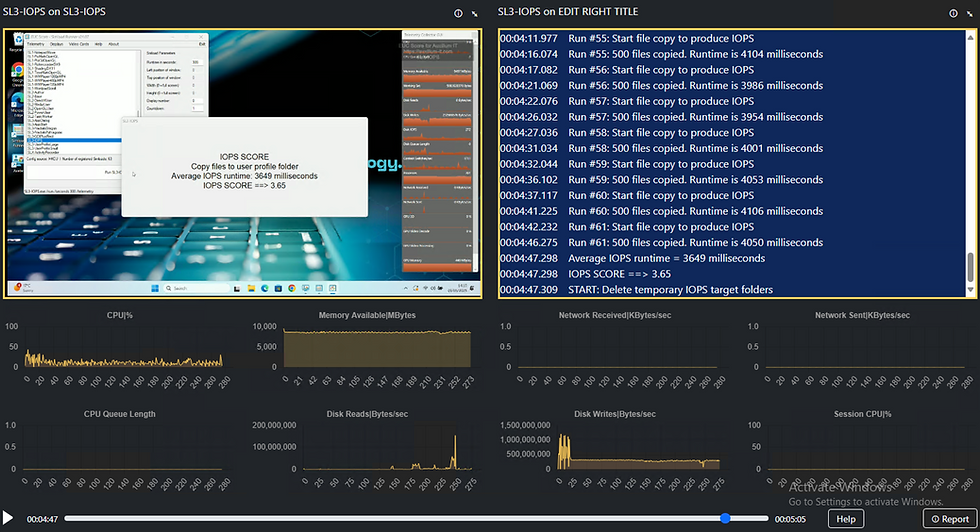
Test 4 - SL3 App Start - Windows performance test. Measure the time it takes to open Notepad2, resize it and move it to a different place on the screen. Repeat these test steps until the Simload runtime is up.
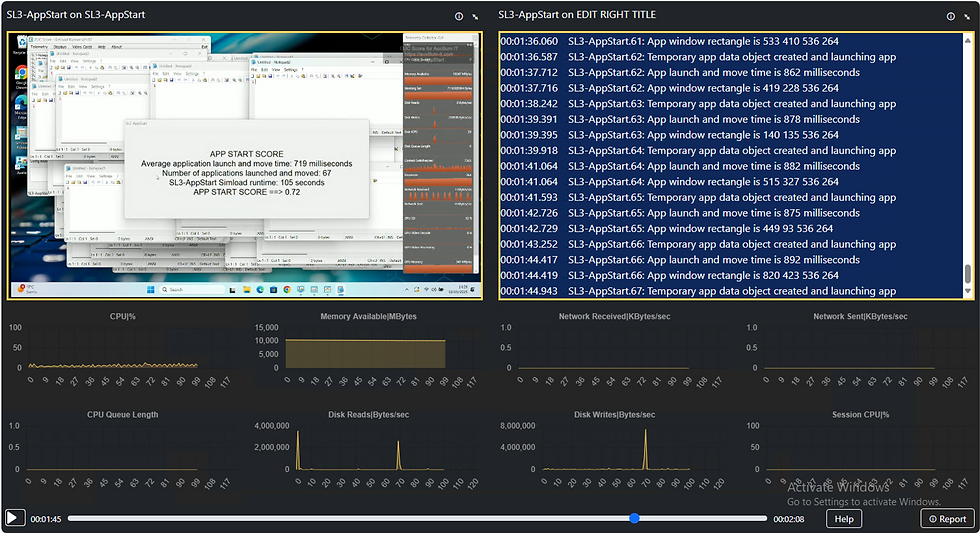
Test 5 - SL3 App Dialog - Windows performance test. Launch Notepad2 and use the keyboard shortcuts Ctrl-O to open and Alt+F4 to close the File Open dialog in quick succession. Measure the time it takes to open the dialog box.
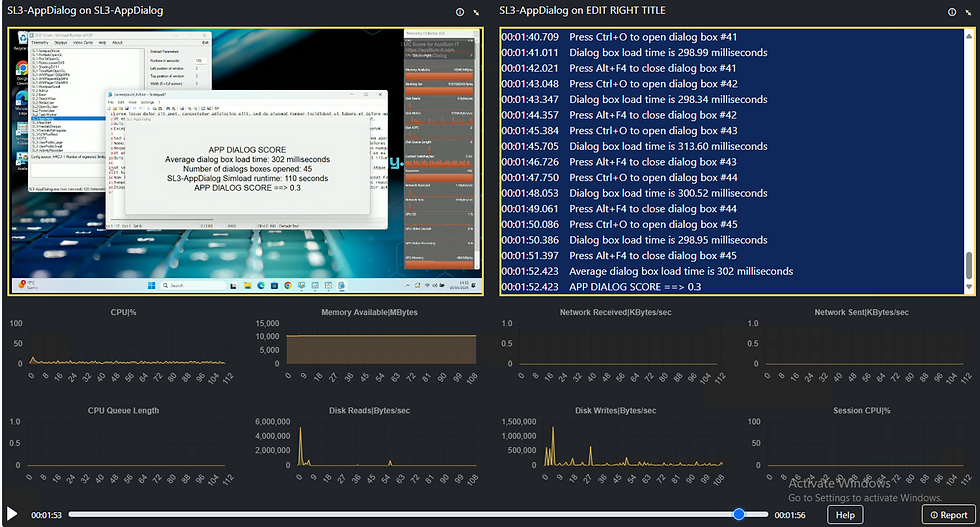
Test 6 - SL3 Fractals Dragon - GDI+ performance test. Measure the time to calculate and render a Dragon fractal curve, a member of a family of self-similar fractal curves approximated by a recursive method. The underlying recursive function is called inside a single thread.

Test 7 - SL3 Fractals Pythagaros - GDI+ performance test. Measure the time to calculate and render a Pythagoras fractal tree, a plane fractal constructed from squares. The procedure to construct the tree elements is called inside a single thread and is applied recursively.
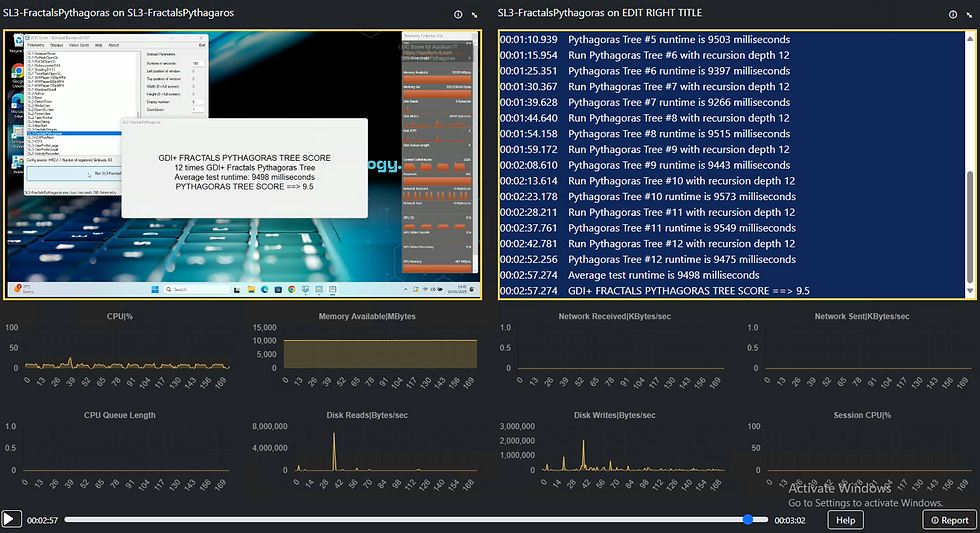
Test 8 - SL3 GDI Plus Rect - GDI+ performance test. Measure the time it takes to paint 10,000 GDI+ rectangles with random location, size and color. Repeat until the Simload runtime is up.
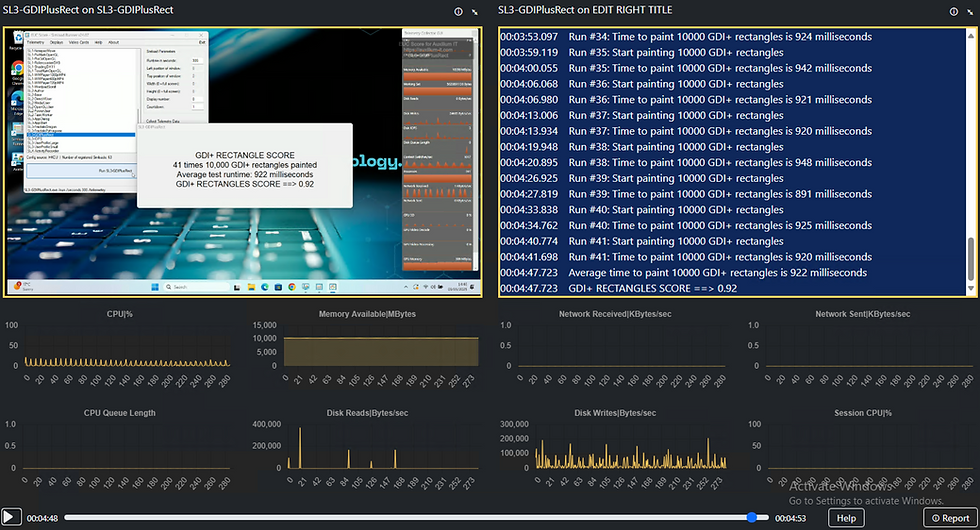
To summarise the scores;
Sim Loads | Benchmark score |
SL3 – UserProfileLarge | 4.78 |
SL3 – UserProfileSmall | 1.7 |
SL3 – IOPS | 3.65 |
SL3 – AppStart | 0.72 |
SL3 – AppDialog | 0.3 |
SL3 – FractalsDragon | 4.99 |
SL3 - GDIPlusRect | 0.92 |
SL3 - FractalsPythagaros | 9.5 |







Comments